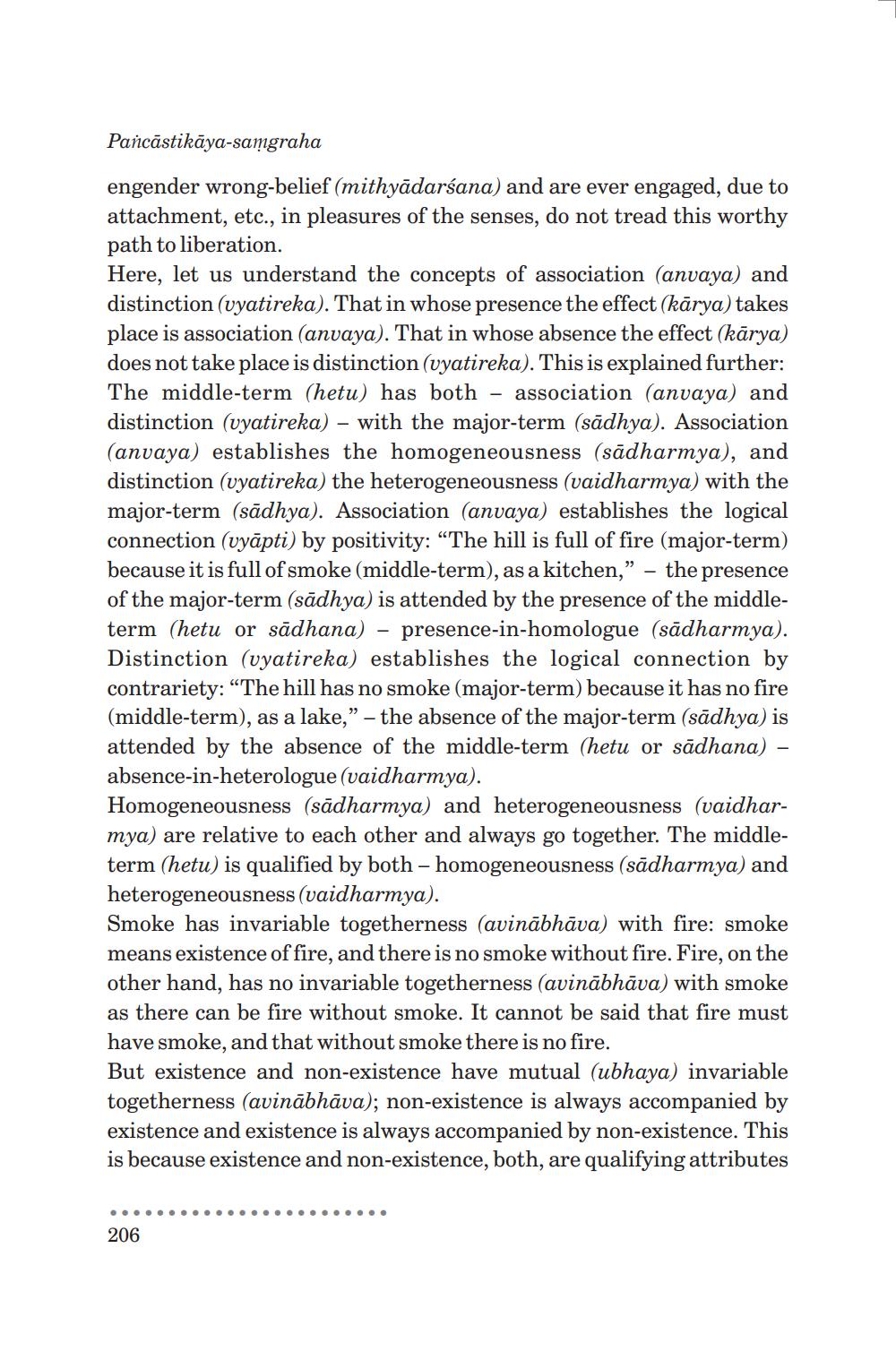________________ Pancastikaya-samgraha engender wrong-belief (mithyadarsana) and are ever engaged, due to attachment, etc., in pleasures of the senses, do not tread this worthy path to liberation. Here, let us understand the concepts of association (anvaya) and distinction (uyatireka). That in whose presence the effect (karya) takes place is association (anvaya). That in whose absence the effect (karya) does not take place is distinction (vyatireka). This is explained further: The middle-term (hetu) has both - association (anvaya) and distinction (vyatireka) - with the major-term (sadhya). Association (anvaya) establishes the homogeneousness (sadharmya), and distinction (uyatireka) the heterogeneousness (vaidharmya) with the major-term (sadhya). Association (anvaya) establishes the logical connection (vyapti) by positivity: "The hill is full of fire (major-term) because it is full of smoke (middle-term), as a kitchen," - the presence of the major-term (sadhya) is attended by the presence of the middleterm (hetu or sadhana) - presence-in-homologue (sadharmya). Distinction (vyatireka) establishes the logical connection by contrariety: "The hill has no smoke (major-term) because it has no fire (middle-term), as a lake," - the absence of the major-term (sadhya) is attended by the absence of the middle-term (hetu or sadhana) - absence-in-heterologue (vaidharmya). Homogeneousness (sadharmya) and heterogeneousness (vaidharmya) are relative to each other and always go together. The middleterm (hetu) is qualified by both - homogeneousness (sadharmya) and heterogeneousness (vaidharmya). Smoke has invariable togetherness (avinabhava) with fire: smoke means existence of fire, and there is no smoke without fire. Fire, on the other hand, has no invariable togetherness (avinabhava) with smoke as there can be fire without smoke. It cannot be said that fire must have smoke, and that without smoke there is no fire. But existence and non-existence have mutual (ubhaya) invariable togetherness (avinabhava); non-existence is always accompanied by existence and existence is always accompanied by non-existence. This is because existence and non-existence, both, are qualifying attributes @ @ . . . .. . . . . . . . . 206




